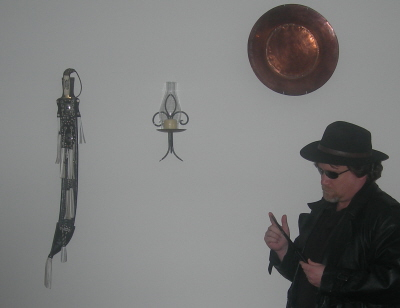Blog Calendar
| ◄ April ► |
| S | M | T | W | T | F | S | | | | 1 | 2 | 3 | 4 | 5 | 6 | 7 | 8 | 9 | 10 | 11 | 12 | 13 | 14 | 15 | 16 | 17 | 18 | 19 | 20 | 21 | 22 | 23 | 24 | 25 | 26 | 27 | 28 | 29 | 30 | | | |
| Archive | RSS |
About This Author
Come closer.
|
Complex Numbers #1068434 added April 10, 2024 at 11:36am
Restrictions: None
A Cinderella Story
I'm sure everyone here already knows what the headline here is saying; at the very least, I've talked about folklore and fairy tales in here before. But the article, from Vox, goes into more detail.
She's a princess. She wears a beautiful dress with a shiny headband, glass shoes, and long white gloves. She overcomes the adversity of her wicked stepmother and stepsisters, who treat her as their maid, so she can meet and dance with a very handsome prince, then hurry home before the clock strikes midnight and her carriage becomes a pumpkin again.
But that's not the real Cinderella. That's the Disney Cinderella, the one from the 1950 animated film and the new remake in theaters right now.
Yeah, that bit's way out of date; the article is from 2015. This makes no difference to the history.
At the center of most Cinderella stories (whether they use that name for their protagonist or not) is one thing: a persecuted heroine who rises above her social station through marriage.
It is impossible for me to hear "Cinderella story" without picturing Bill Murray's glorious, and reportedly ad-libbed, performance in Caddyshack. Which, now I think of it, does have a thematic element of rising above one's social station (but for a dude, not a chick). But it's been a while since I've seen that movie, so my memory there might be a bit fuzzy. And, really, a silly comedy, no matter how funny, has no right to contain such metaphorical depth. It's a movie featuring a dancing gopher, for shit's sake.
The first recorded story featuring a Cinderella-like figure dates to Greece in the sixth century BCE. In that ancient story, a Greek courtesan named Rhodopis has one of her shoes stolen by an eagle, who flies it all the way across the Mediterranean and drops it in the lap of an Egyptian king.
A shoe, not a coconut; an eagle, not a swallow.
The pop culture movie references just keep coming.
Another one of the earliest known Cinderella stories is the ninth-century Chinese fairy tale Ye Xian, in which a young girl named Ye Xian is granted one wish from some magical fishbones, which she uses to create a gown in the hopes of finding a husband.
Because even in China, the most important thing for a young woman to do was find a husband.
In total, more than 500 versions of the Cinderella story have been found just in Europe, and the Cinderella we know best comes from there (France, specifically).
This should not be surprising, but it was to me; I always had this vague idea that it was German in origin, probably because it was featured in Grimm's.
The Brothers Grimm also collected the tale in their famous fairy tale compendium. That story, called Aschenputtel (Cinderella in the English translations), appeared more than 100 years after Perrault's version in the 19th century.
Hence why I associated it with Germany, I suppose.
In the Grimm version, the heroine's slippers are made of gold (not glass), and when the Prince comes to test the stepsisters' feet for size, one of them cuts off her own toes to try and make the shoe fit. In the end, Cinderella marries the prince, her stepsisters serve as her bridesmaids, and doves peck their eyes out during the ceremony. It is, needless to say, a beautiful tale for children.
This is the sort of thing I absolutely adore about the non-Disneyfied versions of these stories.
Did Cinderella invent the Wicked Stepmother trope?
In a word, no.
I didn't think it did. It's almost as common in fairy tales as "Once upon a time..."
But plots don't just emerge out of nowhere. Most are pulled from real-life scenarios or at least real-life feelings. As Dr. Wednesday Martin, author of the book StepMonster, wrote for Psychology Today, "Stepmothers are frequently singled out for very bad treatment indeed by stepchildren who pick up on their mother's anger and resentment and become her proxy in their father's household."
It is entirely possible that the whole reason I saved this article into my queue was because that author's name is Wednesday, and that's too funny not to share.
At its core, Cinderella is about how dependent women once were on men to determine their place in the world.
Yeah, I'm not saying that's wrong or anything, but it strikes me as a postmodernist deconstructive interpretation.
Thus, Cinderella as Disney retold it in 1950, is the true embodiment of what that time period thought of as women achieving the American Dream — not through work, but through marriage.
So, your homework (it would be my homework, but I'm entirely too busylazy) is to reinterpret the story through this post-feminist lens.
Or maybe Caddyshack already did that. |
© Copyright 2024 Robert Waltz (UN: cathartes02 at Writing.Com). All rights reserved.
Robert Waltz has granted InkSpot.Com, its affiliates and its syndicates non-exclusive rights to display this work. |

